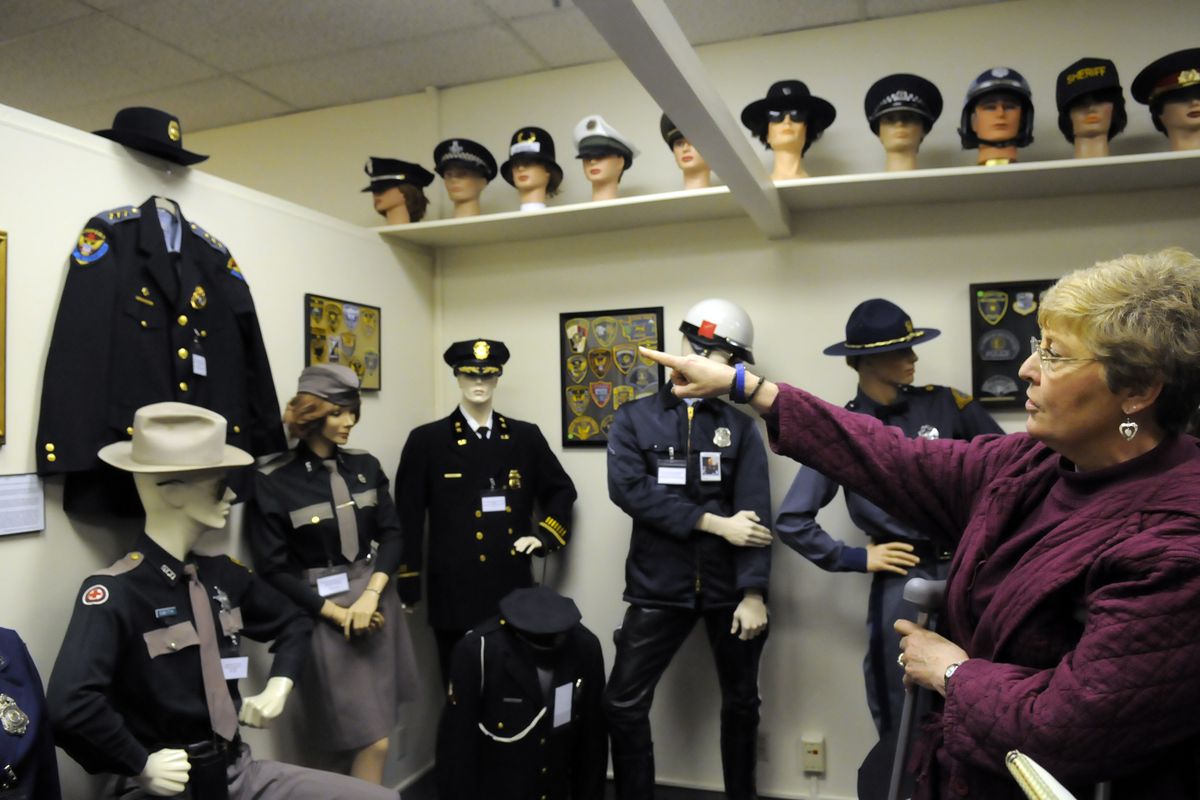Spokane Law Enforcement Museum to open soon

William Horatio Lewis was born in Manlius, N.Y., in 1855. He headed west as a stagecoach driver and was one of the first civilians to arrive after the Battle of the Little Bighorn in 1876. There, he picked up a flute made from the barrel of a Springfield rifle, before he traveled along to his new life as a police officer in Helena.
By 1887, Lewis had married Catherine Linebarger and moved her and their two children to Spokane Falls, where he took a job as a guard at the town jail. Lewis held many positions with what became the Spokane Police Department including that of detective and as the SPD’s first police photographer he began keeping pictures on file, effectively starting SPD’s first identification unit.
And if it wasn’t for Glen Whiteley and the crew of volunteers at the Spokane Law Enforcement Museum, then Lewis’ rifle barrel flute and the belt he sported with his Helena Police Department uniform would no doubt be sitting in a dusty attic somewhere along with the stories of his service to the SPD.
“He was the first Spokane detective,” said Susan Walker, secretary and treasurer of the museum. “His granddaughter called and I feel like I got to know him personally through her. Now we have this display for him here.”
The Spokane Law Enforcement Museum opens on April 27 in the storefront on West First Avenue downtown that used to house a COPS shop. Walker and her husband Bob Walker, a retired SPD officer, have worked tirelessly together with a small group of community volunteers to get the museum ready.
“There is too much negative written about our officers who are really here to protect us,” said Susan Walker. “We need to educate the young people so they respect the law and our police officers. If they follow the law they won’t get in trouble.”
There are a lot of firsts at the museum – including a picture of the first motorcycle officer in Spokane, one of the first woman’s police uniforms and a portrait of Joel Franklin Warren, one of Spokane’s first police chiefs. On display is also retired Spokane Police Chief Terry Mangan’s uniform, and memorabilia from other branches of law enforcement such as The Border Patrol and the Washington State Patrol.
Most of the artifacts, photos, portraits, badges and other police paraphernalia, like a real ball and chain, come from one source: Glen Whiteley’s enormous private collection.
Whiteley is the founder, president and curator of the Spokane Law Enforcement Museum
“I have a seven-car garage and only three of the cars are still in there,” Whiteley said, sheepishly. “I never turn anything down. But I’ve looked at it all many times and wondered what was going to happen to it?”
For years, Whiteley searched high and low for a building. He tried getting old grocery stores and schools; he looked at empty buildings on the outskirts of town – some of which still sit empty.
“I just kept going from one guy to the next, saying ‘I need a building,’ ” Whiteley, who’s a retired sheriff’s deputy said. One day, he invited Spokane Police Chief Anne Kirkpatrick home for a tour of all the stuff he’d collected.
“She was so impressed. She looked at me and said, ‘Glen, I’m going to find you a building,’ ” said Whiteley. “And she did – she found this place for us. It’s been a dream for a long time.”
There are more than 3,000 items in the museum’s collection and the plan is to keep some in storage at Whiteley’s home, from where they can be rotated in and out of the museum’s exhibits.
The museum was licensed by the state in 1996 so it’s been a long haul to get to where it is today.
“We like to say it’s Spokane’s best-kept secret,” said Susan Walker, “well, hopefully it won’t be a secret for that much longer.”
One smaller downstairs room will be turned into the Glen Whiteley Research Library.
“We have so many files and so much information. It will be nice to have one place for all that,” said Susan Walker.
Her husband received a donation of contraband weapons and tattoo equipment made by prisoners from an FBI agent.
“He wanted to know if that was something for the museum – lots of people call like that,” said Bob Walker. “I usually tell them to bring stuff in so we can take a look at it. It’s pretty amazing what’s out there.”
The first items Whiteley received from an officer, decades ago, are two fabric banners with a collection of patches from police departments all over the country.
“This guy had them in his office and gave them to me,” said Whiteley. “I guess that’s how it all started.”
Lewis – who picked up that flute on Custer’s bloody battlefield – also founded the Spokane Police Beneficial Association with the stated purpose to provide for the families of officers who are injured or die while on duty. He retired with the rank of inspector in 1918. On May 13 a monument commemorating Lewis’s outstanding service will be dedicated at Greenwood Memorial Terrace.
The way Lewis’ story is presented at the Spokane Law Enforcement Museum, richly illustrated with old photos and personal artifacts, is typical of what visitors will find at the museum.
There are also countless stories of officers who’ve lost their lives while on duty, like Officer Alfred Waterbury who was shot on Oct. 27, 1909, while investigating a string of robberies. Waterbury died the next day.
“We want to honor them, people like him, who give their lives to protect the rest of us,” said Susan Walker. “We don’t want them to be forgotten.”